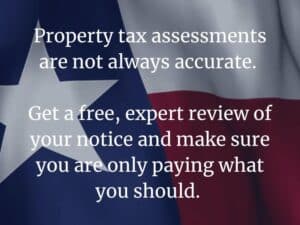Property taxes are a major expense for homeowners and business owners, calculated based on the assessed value of your property as determined by your local appraisal district. The methods used to value your property—such as the sales comparison, cost, or income approach—directly affect this assessed value and, consequently, your tax bill. Understanding these local valuation methods empowers you to verify the fairness of your assessment, catch errors, and potentially reduce your taxes through a protest. This comprehensive guide explains how these methods work, their impact on your property taxes, and actionable steps to ensure a fair valuation, drawing on insights from sources like the Texas Comptroller’s Office and Investopedia. With today’s date being May 15, 2025—a likely deadline for protests in many areas—this information is timely for taking control of your tax burden.
What Are Local Valuation Methods?
Local valuation methods are standardized approaches used by appraisal districts to estimate a property’s assessed value, which serves as the basis for your property tax bill. Taxes are calculated by multiplying the assessed value by the local tax rate (e.g., 2.5%). Appraisal districts aim to determine a property’s fair market value—what it would sell for in an open market—using one or more of the following methods, as outlined by the Uniform Standards of Professional Appraisal Practice (USPAP) and state laws like Texas Tax Code Section 23.01:
- Sales Comparison (Market) Approach: Estimates value based on recent sales of similar properties, adjusted for differences in size, condition, or location.
- Cost Approach: Calculates value by estimating the cost to replace the building, subtracting depreciation, and adding land value.
- Income Approach: Determines value based on the income a property generates, typically used for commercial or rental properties.
Each method considers factors like location, property size, age, condition, and market conditions, but their application varies by property type and local practices, significantly impacting your tax bill.
How Each Valuation Method Impacts Your Property Tax
The choice and application of valuation methods can lead to higher or lower assessed values, directly affecting your taxes. Here’s a detailed look at each method, its impact, and potential pitfalls, supported by industry standards and real-world examples.
1. Sales Comparison (Market) Approach
- How It Works: The appraiser compares your property to similar properties (comps) recently sold in your area, typically within 6–12 months, adjusting for differences like square footage, age, or amenities. For example, if a 2,000 sq ft home sold for $400,000 but your similar home has a larger lot, your value might be adjusted to $410,000.
- When It’s Used: Preferred for residential properties and vacant land with ample sales data, as it reflects current market trends.
- Tax Impact:
- Higher Taxes: If comps are from a hot market or include pricier features (e.g., renovated kitchens), your assessed value may be inflated, increasing your tax bill. A $10,000 overvaluation at a 2.5% tax rate adds $250 yearly.
- Lower Taxes: If comps reflect declining prices or your property has issues (e.g., poor condition), your value could be lower, reducing taxes.
- Potential Pitfalls:
- Outdated or Inaccurate Comps: Using sales from a different market cycle or dissimilar properties can skew values. For example, comps from a gentrified area may overvalue a home in a less desirable neighborhood.
- Ignoring Property Condition: Failure to account for repairs needed (e.g., a $15,000 roof fix) can inflate values.
- Example: Your home is assessed at $450,000 based on comps averaging $440,000, but the comps include renovated homes, while yours needs $20,000 in updates. This overvaluation adds $250 to your annual taxes (at 2.5%). Protesting with evidence of your home’s condition could lower the assessment.
- Key Insight: The sales comparison approach can lead to unfair taxes if comps don’t match your property’s specifics, but it’s protest-friendly with strong evidence like recent sales or photos of issues.
2. Cost Approach
- How It Works: The appraiser estimates the cost to rebuild your property at current material and labor rates, subtracts depreciation (physical wear, outdated features), and adds the land’s value. For example, rebuilding a 2,500 sq ft home at $150 per sq ft costs $375,000; with 20% depreciation ($75,000) and $100,000 land value, the assessed value is $400,000.
- When It’s Used: Common for unique properties, new constructions, or areas with few sales, like custom homes or industrial facilities.
- Tax Impact:
- Higher Taxes: Overestimating replacement costs or underestimating depreciation (e.g., ignoring a 30-year-old HVAC) can inflate values. A $20,000 overvaluation adds $500 yearly at 2.5%.
- Lower Taxes: Significant depreciation (e.g., for an aging building) or low land values can reduce assessments, lowering taxes.
- Potential Pitfalls:
- Inaccurate Depreciation: Failing to account for functional obsolescence (e.g., outdated layout) or external factors (e.g., nearby highway noise) can overvalue properties.
- Land Value Errors: Misjudging land value, especially in transitioning areas, can skew the total assessment.
- Example: A commercial building is assessed at $1.2 million using the cost approach, but the appraiser overlooks $100,000 in functional obsolescence (e.g., outdated wiring). This adds $2,500 to annual taxes (at 2.5%). Protesting with a contractor’s estimate could correct the value.
- Key Insight: The cost approach often overvalues older or unique properties if depreciation isn’t properly applied, offering protest opportunities with evidence of obsolescence.
3. Income Approach
- How It Works: The appraiser calculates the property’s value based on its income potential, typically for rental or commercial properties. Net operating income (NOI) is divided by a capitalization rate (cap rate) reflecting market risk. For example, a building with $50,000 NOI and a 5% cap rate is valued at $1 million ($50,000 ÷ 0.05).
- When It’s Used: Standard for income-generating properties like apartments, offices, or retail centers.
- Tax Impact:
- Higher Taxes: Using an overly optimistic NOI (e.g., assuming full occupancy) or a low cap rate (e.g., 4% vs. 6% market rate) can inflate values. A $100,000 overvaluation adds $2,500 yearly at 2.5%.
- Lower Taxes: High vacancies, rising expenses, or a higher cap rate (reflecting riskier markets) can lower values, reducing taxes.
- Potential Pitfalls:
- Inaccurate Income Data: Relying on outdated or incomplete income/expense data can misrepresent value. For example, not accounting for a 20% vacancy rate can overvalue a property.
- Cap Rate Errors: Using a cap rate from a different market (e.g., urban vs. suburban) can skew results.
- Example: An apartment complex is assessed at $2 million based on a 5% cap rate, but local comps suggest a 6% cap rate due to market risks. This overvaluation adds $3,333 to annual taxes (at 2.5%). Protesting with market cap rate data could save $1,000 yearly.
- Key Insight: The income approach is sensitive to income and cap rate assumptions, making it protestable with accurate financial data.
Other Factors Influencing Valuation and Taxes
Beyond the core methods, several local factors shape how these approaches are applied, impacting your tax bill:
- Assessment Frequency: Some jurisdictions assess annually, reflecting market changes quickly, while others (e.g., every three years in Texas) may lag, leading to outdated values. Frequent assessments can raise taxes in hot markets but lower them in downturns.
- Exemptions: Homestead, senior, or agricultural exemptions can lower taxable value. For example, a $50,000 homestead exemption on a $400,000 home saves $1,250 yearly at a 2.5% rate.
- Computer-Assisted Mass Appraisal (CAMA): Many districts use CAMA systems to value properties en masse, relying on statistical models. Errors in data (e.g., overstated square footage) can lead to overassessments.
How Valuation Methods Can Lead to Unfair Taxes
Valuation methods, while standardized, aren’t foolproof. Errors or misapplications can inflate your assessed value, increasing your tax burden:
- Data Errors: Incorrect property details (e.g., 2,500 sq ft vs. actual 2,300 sq ft) can overvalue your property. A 200 sq ft error at $150 per sq ft adds $750 to annual taxes (at 2.5%).
- Inappropriate Method: Using the cost approach for a marketable home with ample comps can overvalue it, ignoring market trends. For example, a $500,000 cost-based assessment vs. $450,000 market-based adds $1,250 yearly.
- Lack of Uniformity: Non-uniform assessments, where similar properties have different values, violate equity standards (e.g., IAAO’s Coefficient of Dispersion). This can lead to higher taxes if your property is overassessed compared to neighbors.
- Ignoring Market Conditions: Failing to adjust for economic obsolescence (e.g., declining demand) or local changes (e.g., new highway noise) can inflate values.
Real-World Impact: A Case Study
Consider Sarah, a homeowner whose $460,000 home is assessed using the sales comparison approach:
- Issue: The appraiser uses comps averaging $465,000, but they’re from a pricier neighborhood, and Sarah’s home needs $15,000 in repairs.
- Tax Impact: The $460,000 assessment results in an $11,500 tax bill (at 2.5%). Correcting to $425,000 (based on accurate comps and repairs) would save $875 yearly.
- Protest Action: Sarah files a protest by May 15, 2025, with three comps at $420,000–$430,000, photos of damage, and a repair estimate. The district lowers her value to $425,000, saving $8,750 over a decade.
- Lesson: Misapplied valuation methods (wrong comps, ignored condition) inflated Sarah’s taxes, but a protest corrected the error, proving the value of understanding local methods.
How to Ensure a Fair Valuation and Lower Your Taxes
To mitigate the impact of valuation methods and secure a fair tax bill, follow these steps, informed by best practices from the Texas Comptroller:
- Review Your Appraisal Notice:
- Why: The protest deadline is often May 15th (or 30 days from the date of the notice).
- How: Check for errors in square footage, age, or condition. Note the valuation method (e.g., sales comparison) and deadline.
- Example: A notice lists 2,600 sq ft instead of 2,400 sq ft, inflating value by $30,000 ($750 in taxes at 2.5%).
- Understand the Valuation Method Used:
- Why: Knowing whether sales comparison, cost, or income was applied helps you identify errors or protest grounds.
- How: Contact your appraisal district or review the notice. For income properties, request income/expense data used.
- Example: An income approach uses a 4% cap rate vs. a 6% market rate, overvaluing a rental by $500,000 ($12,500 in taxes).
- Gather Evidence for a Protest:
- Why: Strong evidence like comps, repair estimates, or income data can lower your assessed value.
- How:
- Sales Comparison: Collect 3–5 recent sales within a half-mile, similar in size and condition, from MLS or county records. Adjust for differences (e.g., subtract $10,000 for a comp’s extra garage).
- Cost: Document depreciation (e.g., outdated systems) with photos and 1–2 contractor estimates.
- Income: Provide recent income/expense statements showing vacancies or higher expenses, plus market cap rate data.
- Errors: Submit proof of inaccuracies (e.g., a survey correcting lot size).
- Example: Three comps at $415,000–$425,000 and a $10,000 repair estimate support a $420,000 value vs. a $460,000 assessment, saving $1,000 yearly.
- File a Protest by the Deadline:
- Why: Protests must be filed by May 15, 2025, or within 30 days of your notice to challenge an unfair value.
- How: Submit the district’s protest form (online or by mail) with a proposed value and evidence. Pay any fee ($10–$50).
- Example: Filing by May 15 with comps secures an informal review, avoiding a missed deadline costing $1,250 in overpaid taxes.
- Present Your Case Effectively:
- Why: A clear, data-driven case maximizes success in informal reviews or Appraisal Review Board (ARB) hearings.
- How:
- Create a binder with a one-page summary, comp tables, photos, and estimates.
- In informal reviews, present evidence in 10–15 minutes, focusing on data.
- In ARB hearings, deliver a 5–7 minute pitch with visuals, answering questions factually.
- Example: A binder with comps and a repair estimate lowers a $445,000 assessment to $415,000, saving $750 yearly.
- Consider Professional Help for Complex Cases:
- Why: Tax consultants or appraisers offer expertise for high-value or commercial properties, often charging 30–50% of savings.
- How: Hire a consultant with local experience ($300–$1,000) or get a professional appraisal ($500–$2,000). Weigh costs vs. savings.
- Example: A consultant reduces a $1.5 million commercial assessment by $200,000, saving $5,000 yearly for a $1,500 fee.
- Follow Up and Apply Exemptions:
- Why: Verifying reductions and securing exemptions (e.g., homestead) ensures maximum savings.
- How: Check the district’s website for the new value, apply for exemptions as soon as possible, and save evidence for future protests.
- Example: A $30,000 reduction plus a $50,000 homestead exemption saves $2,000 yearly on a $420,000 home.
Why Understanding Valuation Methods Matters
Local valuation methods directly shape your property tax bill by determining your assessed value. Errors or misapplications—such as using inappropriate comps, underestimating depreciation, or misjudging income potential—can inflate your taxes, costing hundreds or thousands annually. By understanding these methods, you can:
- Spot Errors: Identify inaccuracies in data or method application (e.g., wrong comps, ignored obsolescence).
- Protest Effectively: Use targeted evidence to challenge unfair assessments, as demonstrated by Sarah’s $875 yearly savings.
- Maximize Savings: Combine protests with exemptions to lower your taxable value, potentially saving thousands over time.
- Ensure Fairness: Advocate for uniform assessments, aligning with IAAO standards for equity.
Sources like the Texas Comptroller’s Office emphasize that appraisal districts must use consistent methods, yet mistakes happen, especially in mass appraisals. Protesting by today’s deadline (May 15, 2025) is critical to correct these errors and reduce your tax burden.
Taking Action Today
Start by reviewing your 2025 appraisal notice, mailed in spring, for the assessed value, valuation method, errors, and protest deadline (likely today, May 15, or 30 days from notice). Contact your appraisal district to confirm the method used and request supporting data (e.g., comps, income details). Gather evidence—comps, repair estimates, or income statements—and file a protest by the deadline using the district’s form, available online or by request. Present a clear case in reviews or hearings, and follow up to confirm savings and apply exemptions.
For local details, search online for the Appraisal District or call their office for forms, deadlines, and resources. Act today, May 15, 2025, to protest your property taxes and ensure a fair valuation, potentially saving thousands.
Disclaimer: Property tax laws and valuation methods vary by state and county. Always verify local rules with your appraisal district or a qualified professional. This guide is for informational purposes and does not constitute legal advice.






